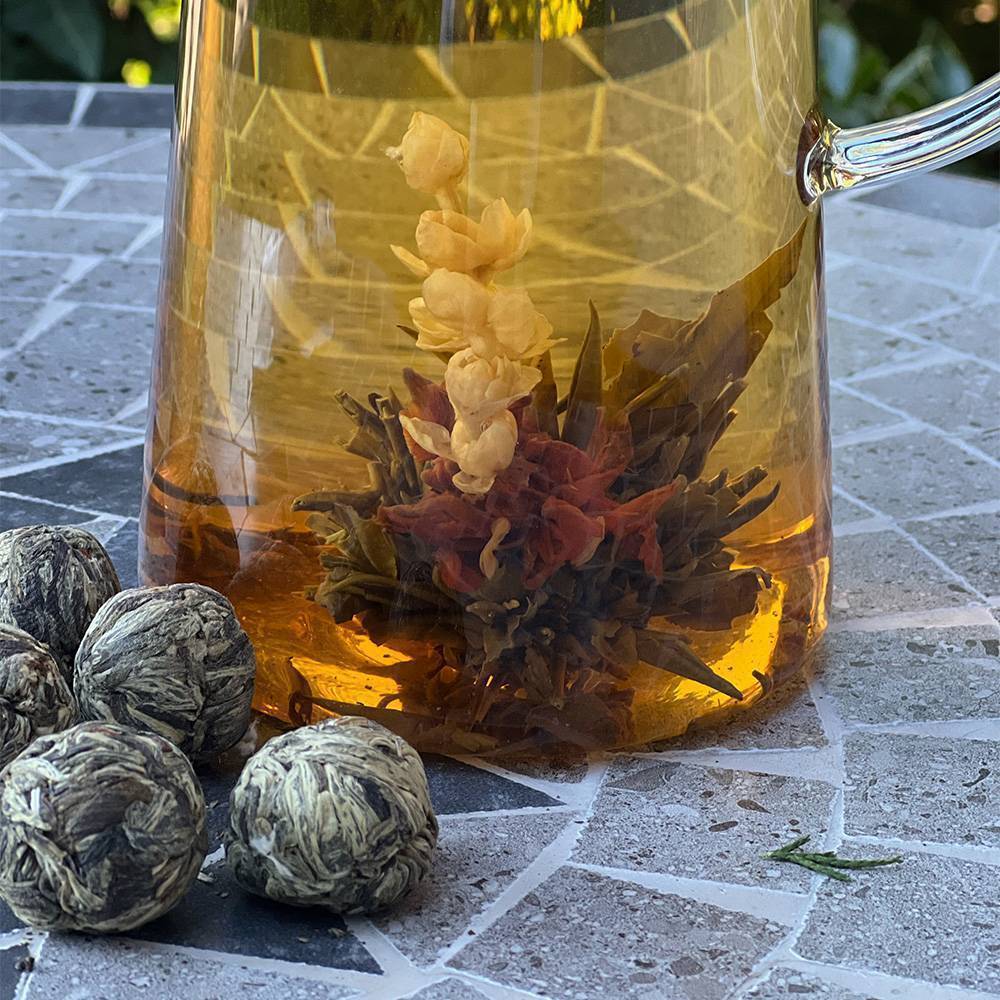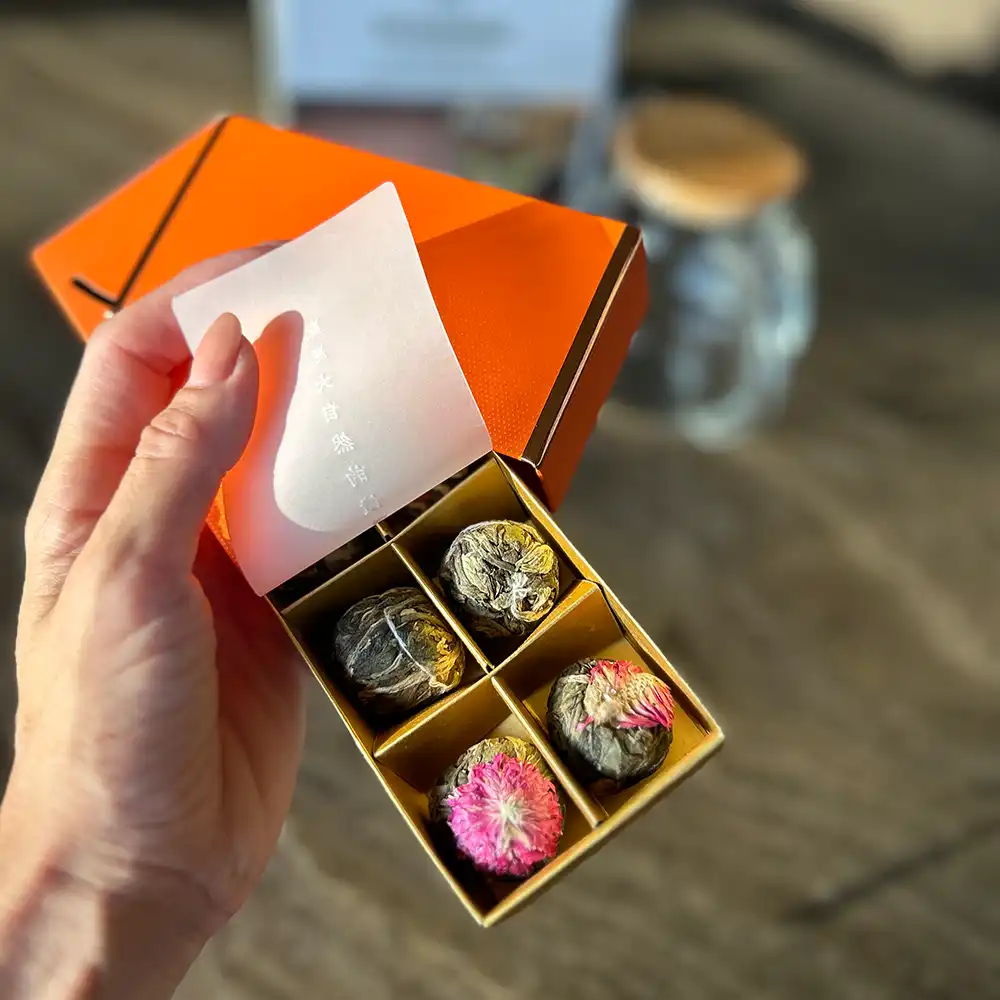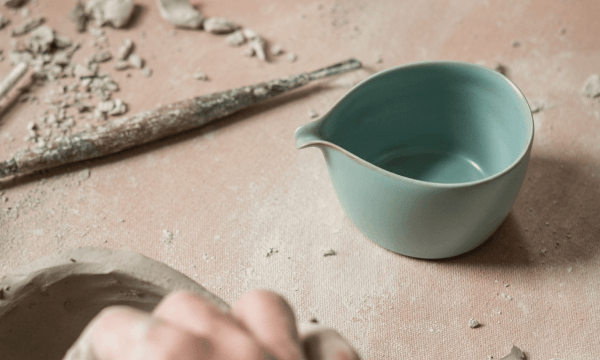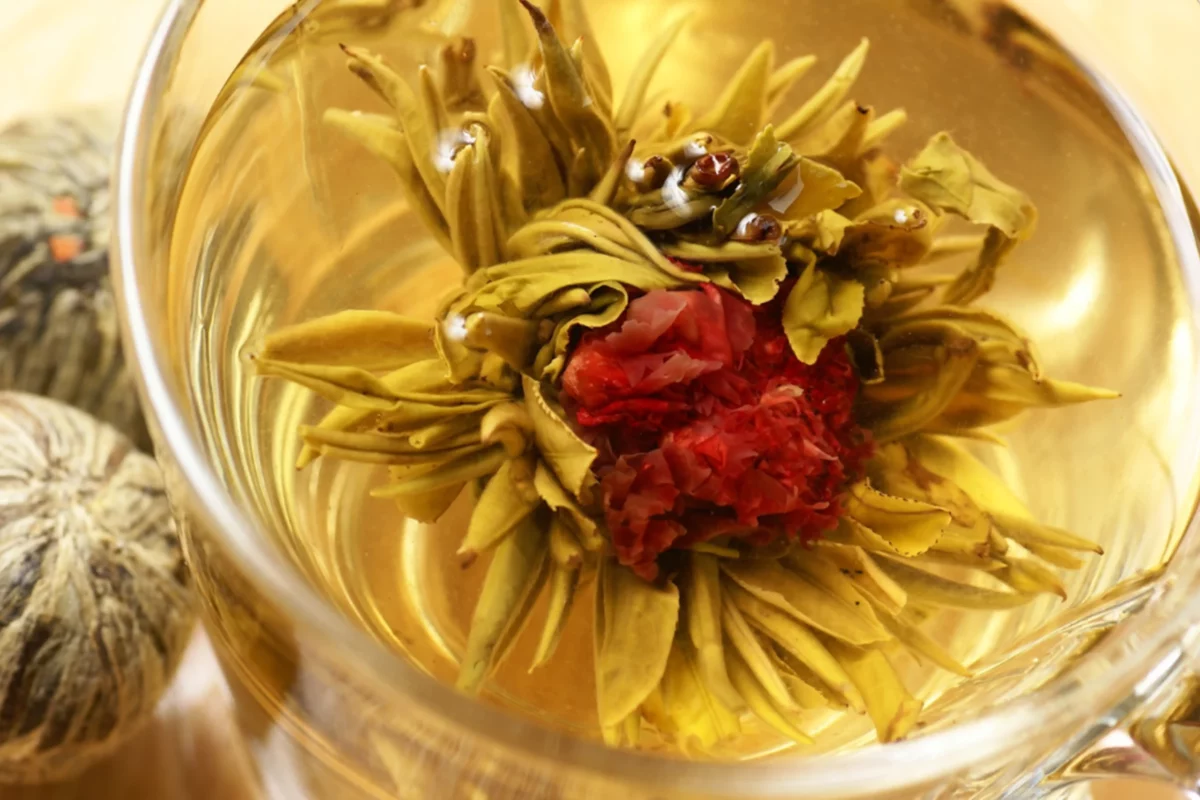tea and its surroundings
Blooming tea or flower tea: magic blooms in the cup
Tea makes for a complete sensory experience, involving not only the sense of smell and taste, but also sight.Today we are talking about the most amazing teas of all, namely blooming teas. Have you ever seen a tea blooming in a teapot? With blooming teas, tea time also becomes a time to celebrate beauty, with the flowers slowly unfolding in the water and magic happening slowly before your eyes.
What are tea flowers or blooming tea
Bloomingteas, or flower teas, are literally “blooming teas.” But what exactly do they consist of?
The raw materials that make up a blooming tea are two: tea leaves and central flower. When making a blooming tea, one tends to prefer delicate teas, such as Bai Hao Yin Zhen white tea also called Silver Needle, with sweet and fruity notes, and Chinese green teas among the gentlest, so that the flavor of the tea does not hide the delicacy of the floral taste during infusion.
The shape of the tea flowers before they hatch is very distinctive: they are small spheres about 3 cm in diameter with a green and sometimes silvery surface, if very young leaves covered in bai hao-the soft down used by the tea plant to protect its most delicate parts from cold, weather and insects. Like a small tea chest, in short, storing a fragrant and colorful treasure inside.
The flowers that can be chosen to compose a blooming tea are many: from the most aromatic and traditional such as osmanthus, chrysanthemum, rose, and jasmine, to those that are more delicate in flavor but brighter in color such as golden lily, yellow dandelion, amaranth red, and gonfrena with bright pink petals. The more vibrant colors the flower has, the more amazing the spectacle of its slow bloom in the teapot will be.
Origin of blooming teas
How did blooming teas come about? Or rather, who and when first had the idea to create this particular combination of tea and flowers? The history of blooming teas is not crystal clear, the only thing certain is their origin: blooming teas undoubtedly come from China, the cradle of tea.
Some believe they date as far back as the 10th century AD: it seems that they were highly prized at court and even particularly complex versions were made, with multiple flowers forming the inner bouquet that then bloomed into the water, colorfully enchanting guests at imperial banquets and events.


Other sources, however, trace the origins of blooming tea to a time much closer to us. We are in the late 1980s and 1990s, in China’s Fujian province: in order to shake up tea sales, which were suffering from stagnation, a merchant named Yun Xue Tong had the idea of blending green tea and flowers (initially the rose, a favorite flower of female customers), creating a product made to impress and delight the eye. Her gimmick was hugely successful, and to this day tea flowers are still marketed all over the world, with a truly immense range of flavors and floral bouquets.
Blooming tea: how they are made
The making of a blooming tea requires skill and craftsmanship: in fact, it is a rather intense manual labor of great precision. First of all, the long leaves and tea buds that will make up the outside of the bud are selected and weighed, and these, while still fresh, are tied together at the bottom with string to form a bunch. This bunch is then opened in the center like a kind of nest and the flower is placed inside, tied or sewn to the leaves, which then close in a ball around it, encasing it and often allowing only a glimpse of a few colored petals at the top.


Each sphere is then individually wrapped very tightly with cloth (usually cotton) so that as it dries it retains the shape it was given. The last step is in the oven: the blooming teas are dried at a temperature of about 90°C.
At this point the cloth cover is removed and the fragrant floral balls are ready to be packaged and sold.
How to prepare tea flowers
Now that we have found out what blooming teas are and how they are made, let’s see how best to infuse them in order to fully enjoy their visual“wow effect” while also enhancing their taste.
First, a glass teapot should be used, so that the transparency of the material allows the spectacle of the flower being opened in infusion to be observed.


Using a temperature-controlled kettle, heat the water to 80°C, a temperature not too high that will allow the tea to release its aromas without the liquor developing astringency or bitterness.
The tea ball should be placed at the bottom of the teapot: after that, 300-350 ml of hot water can be gently poured from the top, going to completely cover the tea flower.
Wait until the flower has fully opened and enjoy the wonder of the leaves slowly unfolding, revealing the colorful petals floating in the water. After about 5-7 minutes, you can strain and serve the tea.
Blooming tea: auspicious symbol
Blooming teas or tea flowers are a handcrafted creation symbolizing love, prosperity and happiness. In addition to being uniquely beautiful, they are also a masterfully handcrafted product using high-quality tea and the freshest flowers, carefully selected to make small jewels.


That’s why they are often given as gifts: beautiful and lucky, they are perfect for any occasion.
Each flower has a different meaning:
- Chrysanthemum – Longevity and tenacity
- Jasmine – Beauty, grace and enduring love
- Rose – Love and romance
- Dandelion – Happiness and wishes come true
- Gonfrena – Immortality
- Lily – Purity and innocence
Not sure which ones to choose? You can directly purchase our Blooming Tea Set and try 5 different buds, created with different teas and flowers! A floral and refined box, which also includes a 1-liter clear glass teapot, so you can admire the beauty of the flowers as they unfold before your eyes.






